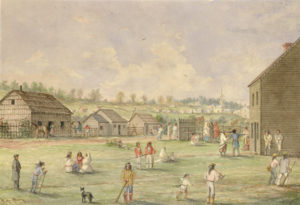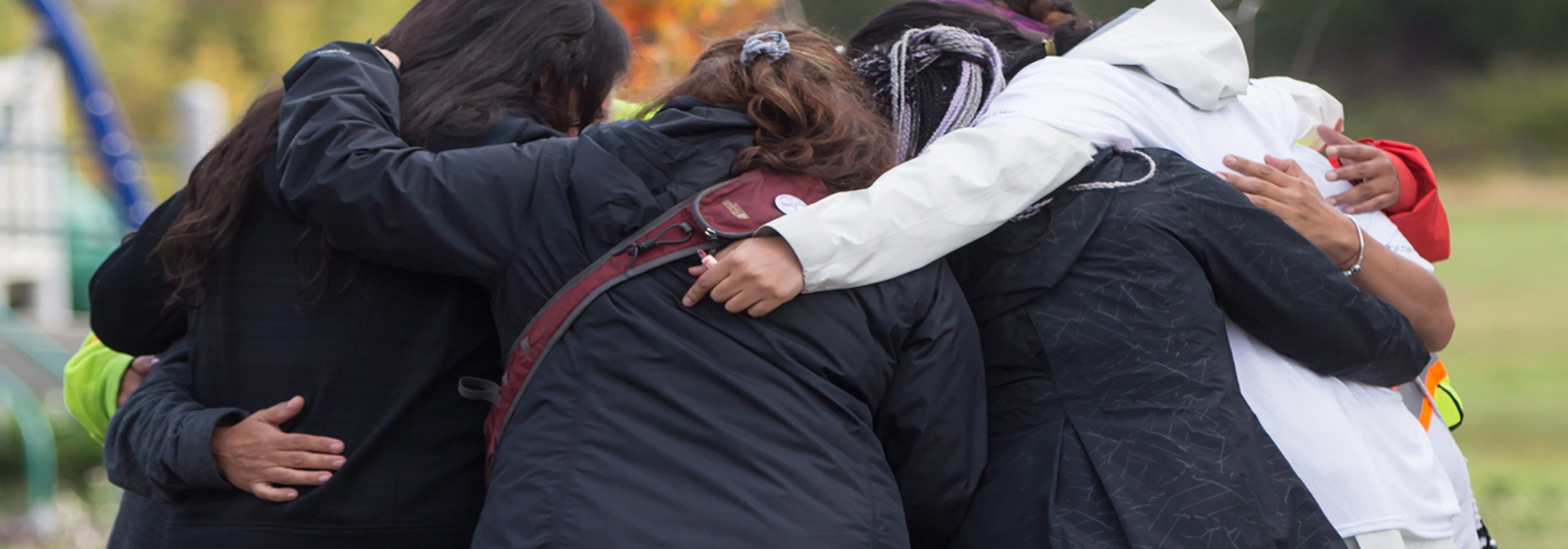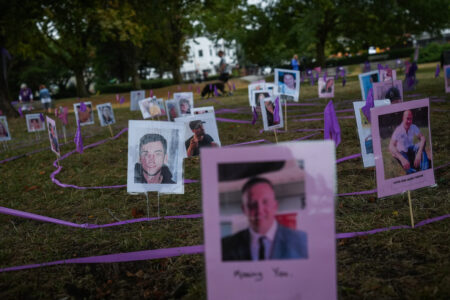
Science policy is divided into two central domains: science for policy, which pertains to the policy infrastructure and uses of scientific knowledge in government decision-making (for example, “evidence-based decision making,” or science advice), and policy for science, which deals with the roles of research and the creation of knowledge in a given society (such as funding research and universities). What’s missing is an analysis of how governments use science and technology to directly govern their citizens.
A highly notable example of governance through techno-science is the use of DNA profiling in government-sponsored forensic science, just one of the ways people are being exposed to new modes of biotechnological identification schemes. For Indigenous peoples, these advances are happening while the fields of science and law continue to be defined by colonial imbalances. Understanding the contexts surrounding the interactions that Indigenous peoples have with state-directed science and technology requires knowledge of the histories of race, gender, and colonialism through which modern sciences and governments have emerged.
The profiling and bio-banking of DNA in forensic science has become commonplace in modern industrial countries, particularly in criminal investigations and for logging the personal information of criminal offenders into databanks. Forensic DNA profiling is also used by states for the purposes of civil paternity testing and for humanitarian purposes, including the reunification of human remains in the event of mass disaster and in missing persons recovery efforts. Advances in genetic technologies, including those used in forensic science have, for the countries that use them, necessitated the creation of policy dealing with the use of DNA in governance. Canada is no exception.
Since 2000, Canada has had the National DNA Databank (NDDB), which is overseen by the Royal Canadian Mounted Police (RCMP) and housed at the force’s headquarters in Ottawa. The NDDB currently has two indices: one that contains the DNA profiles of offenders convicted of a designated offence, and the other for DNA collected at crime scenes.
The NDDB will be expanding in 2018 to include five new indices: two deemed “criminal” – a victims’ index and a voluntary DNA donors index; and three deemed “humanitarian” – a missing persons index, a relatives of missing persons index, and a human remains index. The missing persons, relatives of missing persons, and human remains indices will make up Canada’s national missing persons DNA program.
Changes to the NDDB go back to the Conservative government under Prime Minister Stephen Harper. “Lindsey’s Law,” passed as part of a budget bill in 2014, was spearheaded by the mother of a missing BC girl, who viewed the databank as a way to help link DNA collected from crime scenes with those of missing persons. Lindsey’s Law ended up intersecting with the Conservative government’s Action Plan to Address Family Violence and Violent Crimes Against Aboriginal Women and Girls. The changes to the DNA databank were framed by the federal government as a way to provide support for families of missing and murdered Indigenous women and girls (MMIWG) by giving them the closure necessary in missing persons cases – closure that comes from the identification of their loved ones’ remains.
It has not been Indigenous peoples who primarily pushed for the creation of the missing persons DNA program.
But Indigenous peoples have been cautious about the proposed program. The Native Women’s Association of Canada (NWAC) and the Assembly of First Nations (AFN) have both pointed to the limits of such a response. It has not been Indigenous peoples who have primarily pushed for the creation of the missing persons DNA program. Nevertheless, the federal government has represented it as something that it is doing for their benefit.
This paternalistic approach is not, of course, new to Canadian policy-making, and nor is the registration of Indigenous people on a government database. Since 1951, the Indian Act has included the Indian Register, which systematized to an unprecedented level the pre-existing identification and governance of (some) Indigenous people as Indians. The Indian Register helped to inaugurate in Canada a system of accounting – an accounting of bodies – where Indigenous peoples were enumerated as “status” and “nonstatus” to identify and manage them. The regulation of Indians has been part of the creation of Canada. Now the administration of the Indigenous peoples is happening in a modern context, with the use of genetically based biotechnologies being framed as a matter of justice for victims.

The Indian Act’s patriarchal rules on status have long disenfranchised women, their children and their grandchildren if they married nonstatus individuals. Indigenous feminist scholarship has linked the socio-economic impact of these patriarchal status rules to physical and sexual violence against Indigenous women and girls. Until 1985, for instance, an Indian woman who married a non-Indian man would lose her Indian status, and with it the right to live on reserve and inherit family-held property. Her children experienced the same consequences, and even divorce from her husband or his death did not guarantee a woman’s return to her community. The legal marginalization of Indigenous women from their families and communities was linked to the devaluation of their political and domestic roles, their bodies and ultimately, in too many cases, their lives.
The Indian Register and the national missing persons DNA program are clearly connected, not simply because they both reflect government efforts to database the personal information of individuals (including now biological data), but because the Indian Act itself helps to create the conditions of violence that lead some Indigenous women and girls to go missing and their DNA profiles to wind up in yet another government database.
By next year, there will be a new techno-scientific process that has the legal authority to put citizens’ bodily material into the physical possession of the Canadian state. For many Indigenous women, the state contributed to creating the colonial conditions for the violence that they might experience in the first place. Given such a convoluted politics, there are important questions to address. Will the NDDB become a racialized archive of sorts, bolstering a colonial narrative that Indigenous peoples are a race that will inevitably perish? How can Indigenous peoples be assured that the DNA profiles and biological samples possessed by the RCMP, and the private labs that it contracts, will be secured? What other measures will the government take to eliminate violence against Indigenous individuals and communities? Given that addressing violence against Indigenous women and girls was a motivating factor involved in the creation of the missing persons DNA program, will Indigenous peoples be involved in its governance?
To be clear, the benefit that families may gain in receiving confirmation of their loved ones’ whereabouts, even possibly in death, should not be discounted. The helpfulness of forensic science in cases where positive identification leads to the resolution of a missing person or homicide case is valid. However, the downsides of employing these biotechnologies, and the ways that they increase the colonial surveillance and management of Indigenous peoples must be grappled with. Biotechnologies like those in the DNA-based missing persons program present a partial solution to addressing violence against Indigenous women and girls, by calling for the post-mortem identification of missing persons. But the limitations of such a techno-scientific response stand out in the context of societal reluctance to make the systemic changes necessary to bring about the end of gendered colonial violence.
This article is part of the special feature The Indian Act: Breaking Its Stubborn Grip.
Photo: Indigenous women gather together before walking with a group of family members and advocates of missing and murdered Indigenous women and girls along the so-called Highway of Tears, in Moricetown, British Columbia, on Monday September 25, 2017. THE CANADIAN PRESS/Darryl Dyck.
Do you have something to say about the article you just read? Be part of the Policy Options discussion, and send in your own submission. Here is a link on how to do it. | Souhaitez-vous réagir à cet article ? Joignez-vous aux débats d’Options politiques et soumettez-nous votre texte en suivant ces directives.









